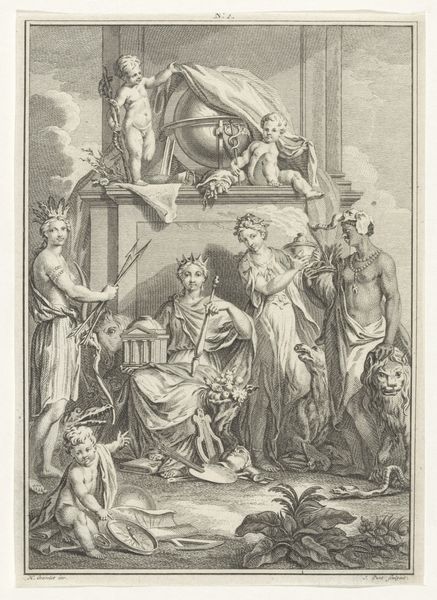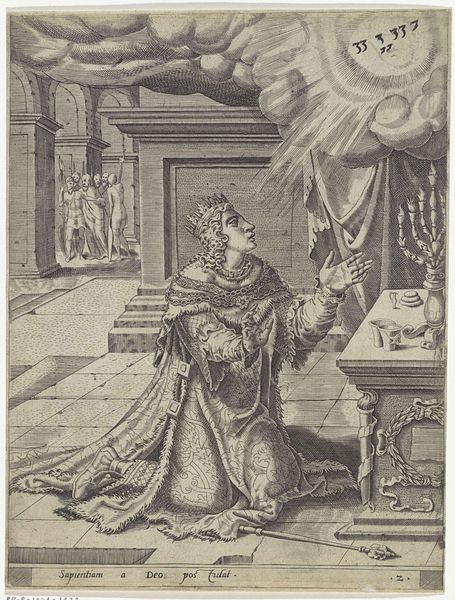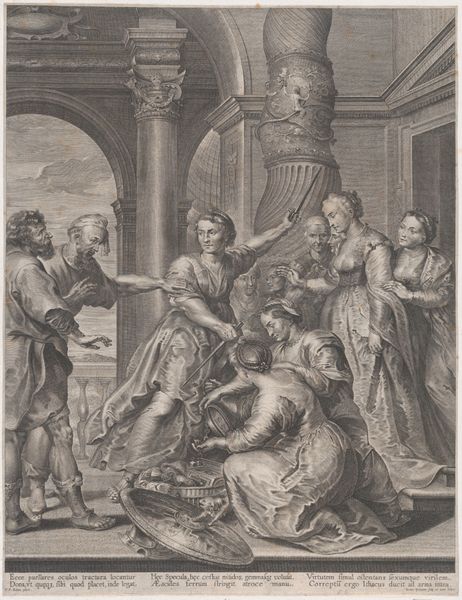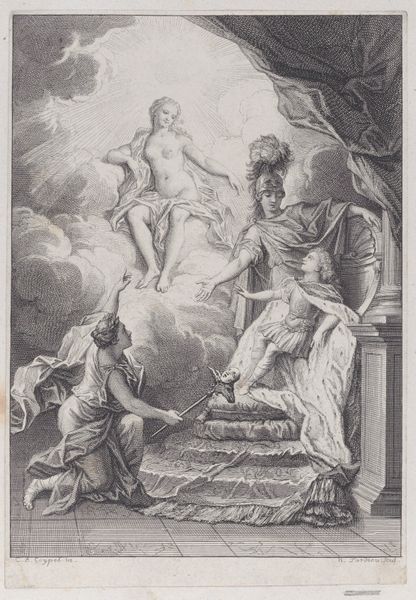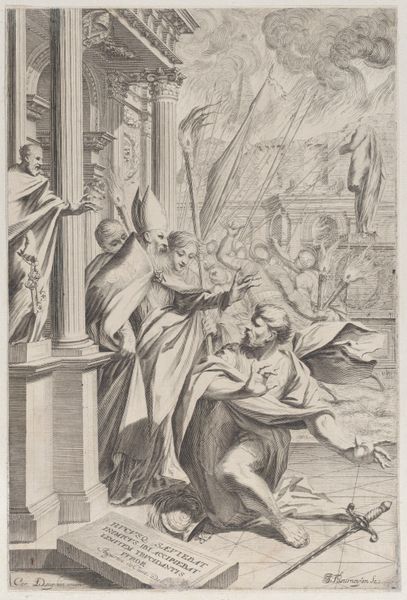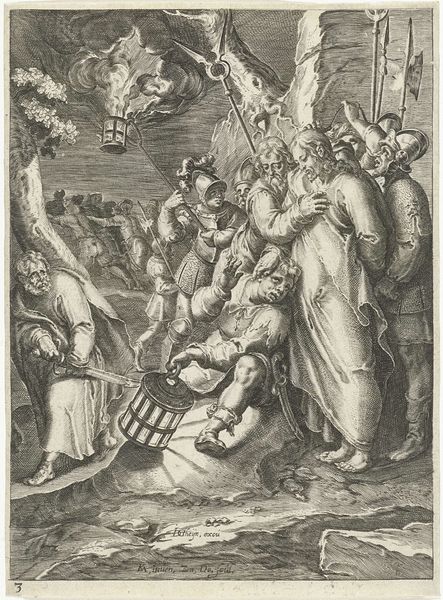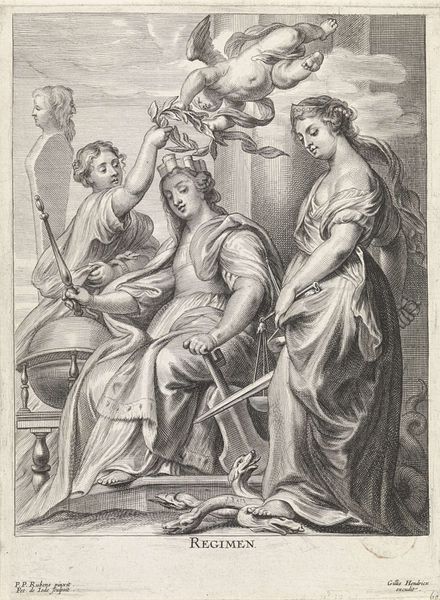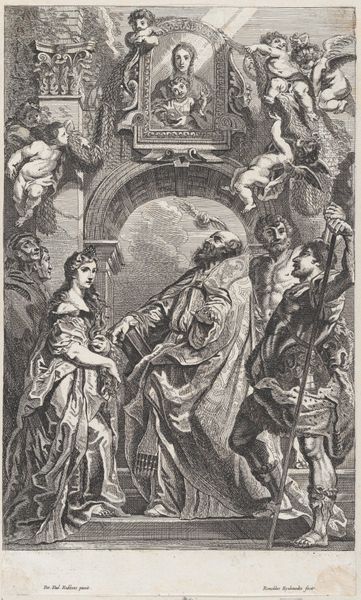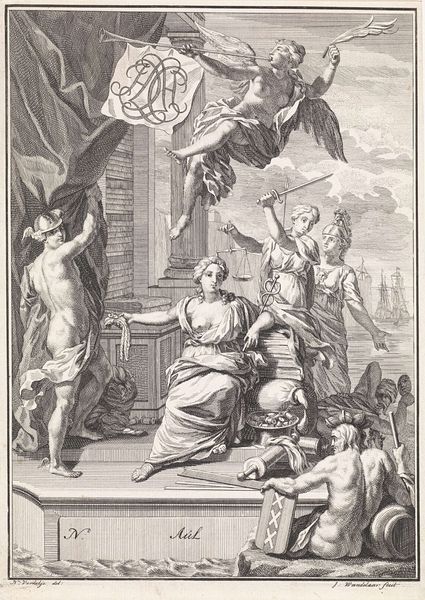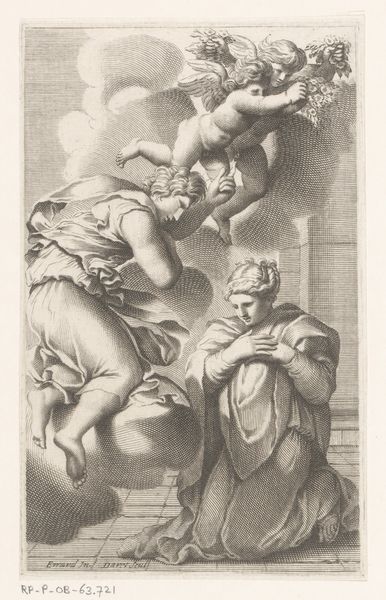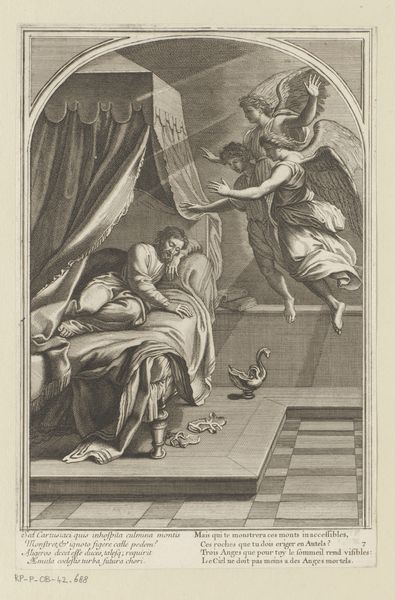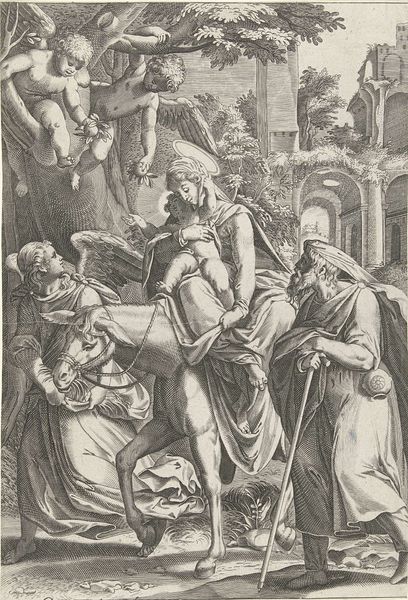
drawing, print, engraving
#
drawing
#
allegory
#
baroque
# print
#
genre-painting
#
engraving
Dimensions: Sheet (Trimmed): 14 5/16 × 9 15/16 in. (36.3 × 25.2 cm)
Copyright: Public Domain
Curator: What a fascinating piece! We’re looking at a print entitled “Age adorned by folly with the clothes of youth.” It’s an engraving made by Louis Surugue after a design by Charles-Nicolas Cochin, dating from 1745. Editor: Well, my immediate response is...unsettling. The contrast between the youthful woman and the clearly aging figure she's attending to creates a discordant visual tension. It feels deliberately uncomfortable. Curator: Precisely! That tension is central to its meaning. The composition guides our eye through the contrasts in texture and form, doesn't it? Look at the drapery versus the aged skin, the smooth curve of the cherub against the sharp angles of the architecture. The work explores those semiotic markers of youth and age. Editor: Indeed. The political dimensions are key here. These images reflect the social anxieties of the era concerning appearance and social standing. A cosmetic culture was blooming, fueled by aristocratic ideals, in order to gain positions. The painting points out how fragile social appearance can be and the artificial construction of one’s identity. Curator: And what is intriguing, the central woman in this depiction applies paint to her lips. In terms of pictorial space, it almost directly connects her gesture to Cupid above her and the assisting maiden who arranges the elder woman’s hair. Thus we can consider her central to the allegory itself. Editor: It's a sharp commentary on societal pressures that encourage this artificial pursuit of youth, revealing anxieties present within the aristocratic, bourgeois class who try desperately to conceal wrinkles and other symptoms of growing old with rouge. Curator: An engagement that is reinforced by those ornate details, from the lace and fabric to the beauty table, and a formal vocabulary in visual form, mirroring its critique of cultural obsession with fleeting ideals. The drawing guides you with its diagonal movements in this regard from the very old to the cherub to the assistant. Editor: This work speaks volumes about 18th-century beauty ideals and social anxieties by displaying a woman so blatantly using every item and method to become who she once was—but alas can never again be. What a statement. Curator: Exactly. It reminds us that art is always deeply embedded within and shaped by its own context. Editor: And perhaps our responses today are as much a mirror as that lady's cosmetic mirror, telling us what matters to us.
Comments
No comments
Be the first to comment and join the conversation on the ultimate creative platform.

